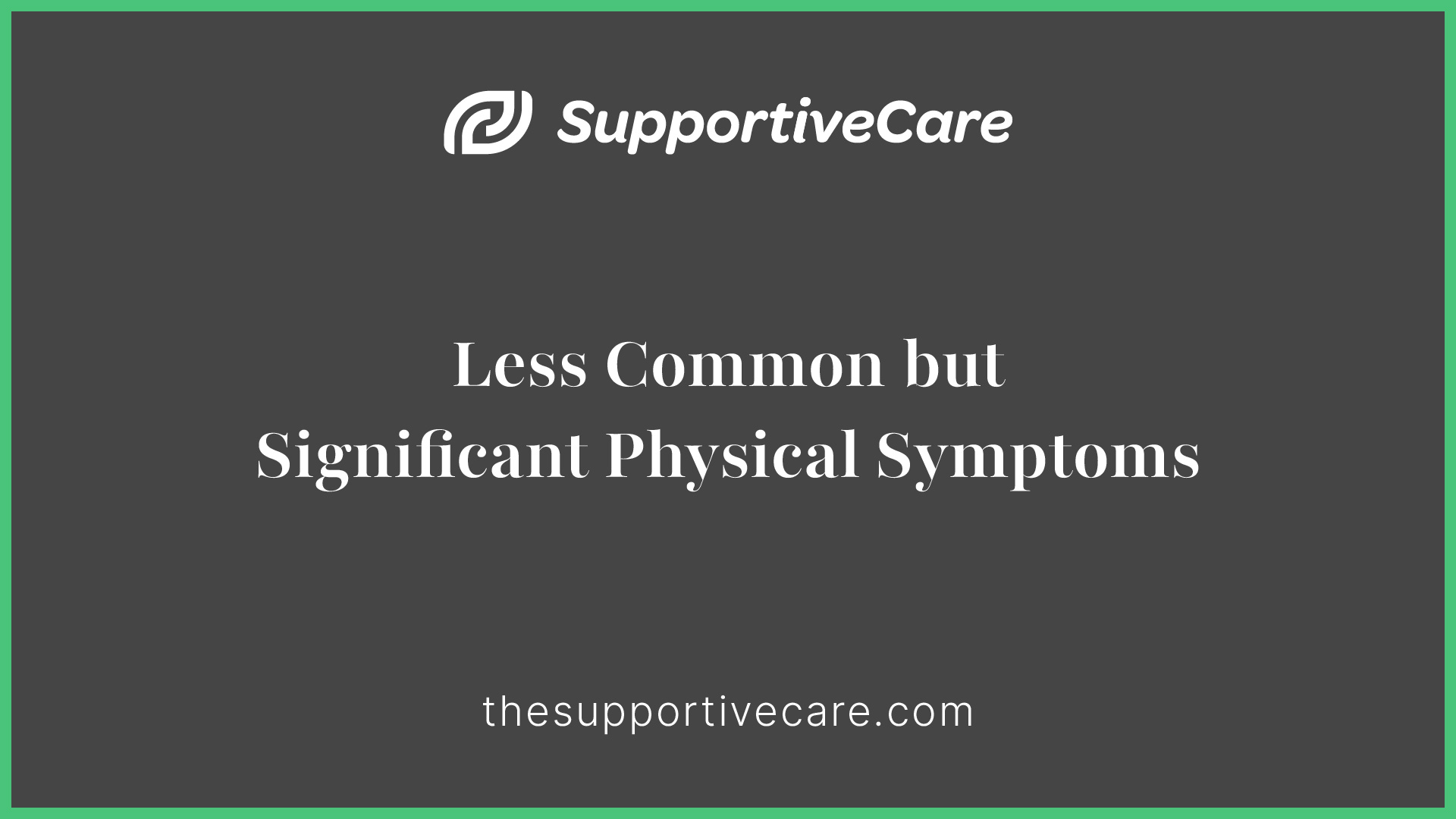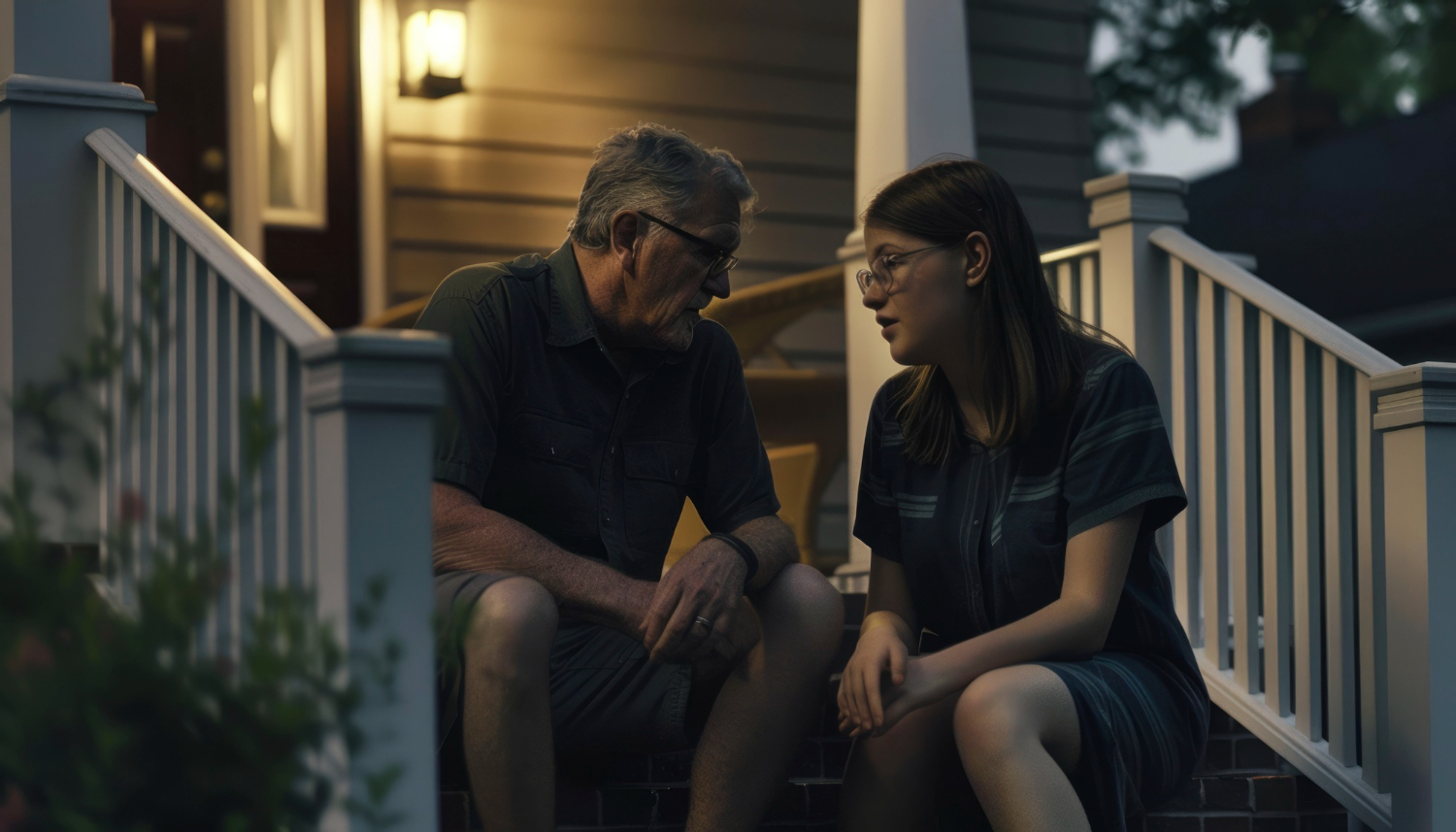
Anxiety disorders affect approximately 40 million adults in the United States alone, making them the most common mental health conditions in the country. While many recognize the psychological impact of anxiety, the physical manifestations often go unacknowledged or misunderstood. This comprehensive guide explores the connection between mind and body, detailing how anxiety manifests physically and offering evidence-based strategies for management.
The Mind-Body Connection in Anxiety
Anxiety is not merely a psychological state—it's a whole-body experience. When you feel anxious, your body activates its fight-or-flight response, an evolutionary mechanism designed to protect you from danger. This biological response triggers a cascade of physical reactions that prepare your body to either confront or escape a perceived threat.According to the American Psychological Association, this stress response begins in the amygdala, the brain's fear center, which sends distress signals to the hypothalamus. The hypothalamus then activates the sympathetic nervous system, initiating the release of stress hormones like adrenaline and cortisol throughout the body.
The Science Behind Anxiety's Physical Symptoms
Recent research published in the Journal of Clinical Psychology indicates that 87% of individuals with Generalized Anxiety Disorder (GAD) report significant physical symptoms. These physiological reactions occur because anxiety triggers:
- Increased heart rate and blood pressure
- Redirected blood flow from the digestive system to major muscle groups
- Enhanced production of glucose for immediate energy
- Shallow, rapid breathing to increase oxygen intake
- Muscle tension to prepare for quick movement

Common Physical Symptoms of Anxiety
Cardiovascular Symptoms
Increased Heart Rate and PalpitationsOne of the most commonly reported physical symptoms of anxiety is a racing heartbeat. During periods of heightened anxiety, your heart may beat 20-30% faster than its resting rate. This occurs because adrenaline signals your heart to pump more blood to your muscles and vital organs.Chest Pain and TightnessApproximately 40% of anxiety sufferers report experiencing chest pain or tightness. While these sensations can mimic heart attack symptoms, they typically result from muscle tension and changes in breathing patterns. However, it's always best to seek medical evaluation for chest pain to rule out cardiovascular issues.
Respiratory Symptoms
Shortness of BreathAnxiety frequently causes breathing to become shallow and rapid. A 2019 study in the Journal of Anxiety Disorders found that 60% of panic attack sufferers identified shortness of breath as their most distressing symptom. This hyperventilation reduces carbon dioxide levels in the blood, leading to further symptoms like dizziness and tingling sensations.Feeling of Choking or SmotheringThe sensation of a lump in the throat (globus pharyngis) affects nearly 45% of individuals with anxiety disorders. This feeling stems from tension in the throat muscles and is rarely dangerous, though it can be extremely uncomfortable.
Digestive Symptoms
Stomach Distress and NauseaThe gut-brain connection plays a crucial role in anxiety's physical manifestations. The digestive system contains millions of neurons that communicate directly with the brain, explaining why emotional stress often triggers gastrointestinal symptoms.Statistics indicate that individuals with anxiety disorders are five times more likely to develop irritable bowel syndrome (IBS) than the general population. Common digestive symptoms include:
- Stomachaches and cramping
- Nausea and queasiness
- Loss of appetite
- Diarrhea or constipation
Appetite ChangesApproximately 65% of people with chronic anxiety report significant changes in appetite. While some experience diminished hunger, others may engage in stress eating, consuming more calories than usual to temporarily soothe emotional distress.
Musculoskeletal Symptoms
Muscle Tension and PainChronic muscle tension represents one of anxiety's most pervasive physical symptoms, with studies indicating that up to 75% of individuals with anxiety disorders experience persistent muscle tension. Common areas affected include:
- Jaw and facial muscles (often leading to temporomandibular joint disorder)
- Neck and shoulders
- Lower back
- Hands and arms
This prolonged tension can contribute to headaches, posture problems, and chronic pain conditions.Trembling and ShakingFine motor tremors affect approximately 35% of individuals during anxiety episodes. These involuntary movements reflect the body's heightened state of alertness and the surge of adrenaline in the bloodstream.
Neurological Symptoms
Dizziness and LightheadednessChanges in blood pressure and breathing patterns during anxiety can lead to feelings of imbalance. Research suggests that up to 30% of individuals diagnosed with vestibular disorders (conditions affecting balance) actually have symptoms primarily caused by anxiety.HeadachesTension headaches represent a common physical manifestation of anxiety, with studies indicating that individuals with anxiety disorders are 2.5 times more likely to experience recurring headaches than those without anxiety. These headaches typically present as a band-like pressure around the forehead and temples.
Sleep Disturbances
Insomnia and Sleep ProblemsThe relationship between anxiety and sleep is bidirectional—anxiety disrupts sleep, and sleep deprivation worsens anxiety. According to the National Sleep Foundation, 70% of adults with anxiety disorders report difficulty falling or staying asleep. This creates a challenging cycle where physical symptoms intensify due to insufficient rest.

Less Common but Significant Physical Symptoms
Dermatological Symptoms
Anxiety can manifest through various skin reactions, including:
- Excessive sweating (hyperhidrosis)
- Flushing and hot flashes
- Hives or rashes
- Exacerbation of existing skin conditions like eczema or psoriasis
Research published in the Journal of Clinical Dermatology found that 30% of dermatology patients have underlying anxiety contributing to their skin conditions.
Immune System Effects
Chronic anxiety may compromise immune function through prolonged elevation of stress hormones. Studies indicate that individuals with anxiety disorders experience:
- 70% higher rates of common infections like colds and flu
- Slower wound healing
- More severe allergic reactions
- Increased inflammation markers in the bloodstream
When Physical Symptoms Require Medical Attention
While most physical symptoms of anxiety aren't dangerous, certain manifestations warrant prompt medical evaluation:
- Severe chest pain, especially with shortness of breath, nausea, or arm/jaw pain
- Fainting or loss of consciousness
- Extreme dizziness that prevents standing or walking
- Persistent heart palpitations or irregular heartbeat
- Unexplained weight loss exceeding 5% of body weight
- Severe digestive symptoms including blood in stool
A comprehensive study by the Cleveland Clinic found that approximately 25% of all emergency room visits for chest pain are ultimately attributed to anxiety rather than cardiac issues. However, it's always better to err on the side of caution when experiencing concerning physical symptoms.
Distinguishing Anxiety Symptoms from Other Medical Conditions
Physical symptoms of anxiety can mimic several serious medical conditions, including:
- Heart conditions (heart attack, arrhythmia)
- Respiratory disorders (asthma, COPD)
- Thyroid dysfunction (hyperthyroidism)
- Neurological disorders (multiple sclerosis, vertigo)
Proper medical evaluation often includes:
- Physical examination
- Blood tests (including thyroid function and complete blood count)
- Electrocardiogram (EKG) for heart-related symptoms
- Additional testing based on specific symptoms
According to research in the American Journal of Medicine, approximately 20% of patients initially presenting with anxiety symptoms are found to have underlying medical conditions contributing to their symptoms.
Evidence-Based Strategies for Managing Physical Symptoms
Breathing Techniques
Controlled breathing exercises effectively counteract the shallow breathing patterns associated with anxiety. The 4-7-8 technique (inhale for 4 seconds, hold for 7, exhale for 8) has been shown to reduce heart rate by an average of 15% within minutes.
Progressive Muscle Relaxation
This systematic relaxation technique involves tensing and then releasing different muscle groups. Research in the Journal of Behavioral Medicine demonstrated that regular practice of progressive muscle relaxation reduced muscle tension by 35% and improved sleep quality in anxiety patients.
Regular Physical Activity
Exercise serves as a powerful anxiety management tool by:
- Reducing levels of stress hormones
- Increasing production of endorphins (natural mood elevators)
- Improving sleep quality
- Enhancing overall resilience to stress
A landmark study in the Journal of Psychiatric Research found that participants who engaged in regular aerobic exercise (30 minutes, 3-5 times weekly) experienced a 30% reduction in anxiety symptoms compared to sedentary controls.
Mindfulness Practices
Mindfulness-based interventions help individuals recognize physical anxiety symptoms without judgment and reduce reactivity to these sensations. A meta-analysis of 39 studies found that mindfulness practices yielded an average 40% reduction in anxiety symptoms, with improvements maintained at 6-month follow-up.
Cognitive Behavioral Therapy (CBT)
CBT specifically targeting physical symptoms helps individuals:
- Identify misinterpretations of bodily sensations
- Challenge catastrophic thinking patterns
- Develop healthier responses to physical discomfort
Research indicates that 75% of individuals receiving CBT for anxiety experience significant improvement in physical symptoms.
Medication Options
When appropriate, medication may help manage physical symptoms of anxiety:
- Selective serotonin reuptake inhibitors (SSRIs) can reduce overall anxiety levels
- Beta-blockers may help control physical symptoms like rapid heartbeat and trembling
- Benzodiazepines provide short-term relief for acute anxiety symptoms (though carry risk of dependence)
According to the American Psychiatric Association, approximately 60% of individuals with anxiety disorders experience substantial symptom reduction with appropriate medication.
Lifestyle Modifications to Reduce Physical Symptoms
Dietary Considerations
Emerging research suggests strong connections between diet and anxiety levels:
- Limiting caffeine intake (coffee, tea, energy drinks, chocolate)
- Reducing alcohol consumption
- Maintaining stable blood sugar through regular meals
- Increasing omega-3 fatty acids through fatty fish, walnuts, and flaxseeds
- Prioritizing gut health through fiber and fermented foods
A study in the Journal of Nutritional Science found that participants who reduced caffeine consumption experienced a 25% decrease in anxiety-related physical symptoms within two weeks.
Sleep Hygiene
Improving sleep quality can significantly reduce physical symptoms of anxiety:
- Maintaining consistent sleep/wake times
- Creating a comfortable sleep environment
- Limiting screen time before bed
- Developing a relaxing bedtime routine
Research indicates that improving sleep quality yields an average 30% reduction in daytime anxiety symptoms.
Stress Management Techniques
Incorporating regular stress-reduction practices helps prevent anxiety from manifesting physically:
- Time in nature (shown to reduce cortisol levels by up to 20%)
- Creative expression through art, music, or writing
- Social connection and community involvement
- Setting appropriate boundaries in work and personal life
When to Seek Professional Help
If physical symptoms of anxiety significantly impact your daily functioning, professional help may be necessary. Consider consulting a healthcare provider if:
- Symptoms persist despite self-help strategies
- You avoid important activities due to physical discomfort
- You frequently worry about your health or bodily sensations
- You experience panic attacks with intense physical symptoms
Early intervention typically leads to better outcomes, with studies showing that individuals who receive appropriate treatment within one year of symptom onset have higher recovery rates.
Conclusion
Physical symptoms represent a central component of the anxiety experience, affecting 90% of those with anxiety disorders. Understanding the connection between psychological distress and bodily sensations empowers individuals to recognize anxiety's physical manifestations and seek appropriate support.By implementing evidence-based strategies—from breathing techniques and exercise to professional treatment when needed—individuals can effectively manage the physical symptoms of anxiety and improve overall quality of life.Remember that anxiety's physical symptoms, while distressing, are not dangerous in themselves. With proper support and consistent practice of management techniques, most people experience significant improvement in both psychological and physical aspects of anxiety.
References
- https://www.nimh.nih.gov/health/topics/anxiety-disorders/index.shtml
- https://adaa.org/understanding-anxiety/facts-statistics
- https://www.apa.org/topics/anxiety/
- https://www.psychiatry.org/patients-families/anxiety-disorders/what-are-anxiety-disorders
- https://www.mayoclinic.org/diseases-conditions/anxiety/symptoms-causes/syc-20350961






























